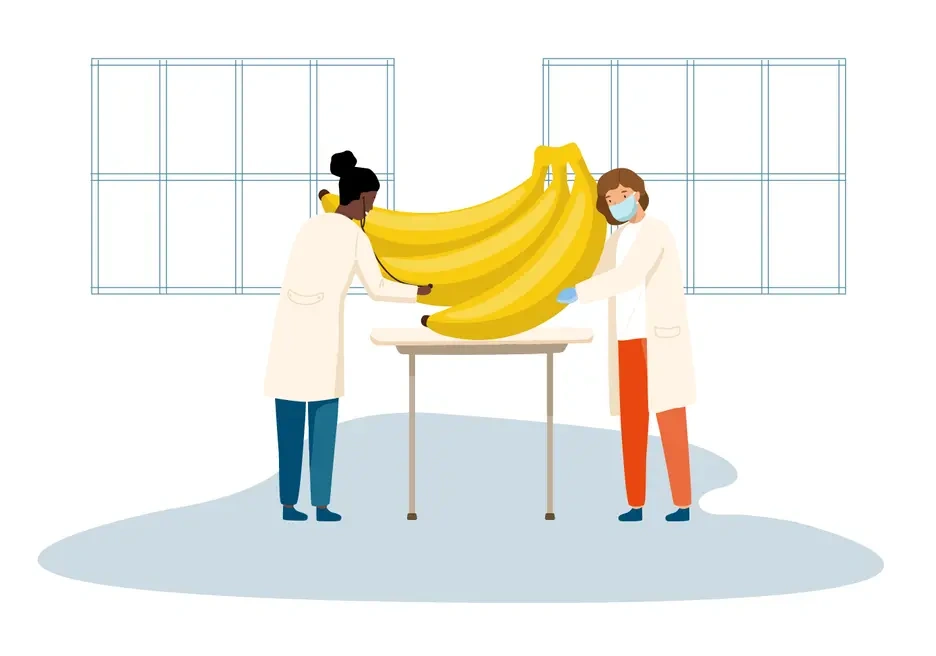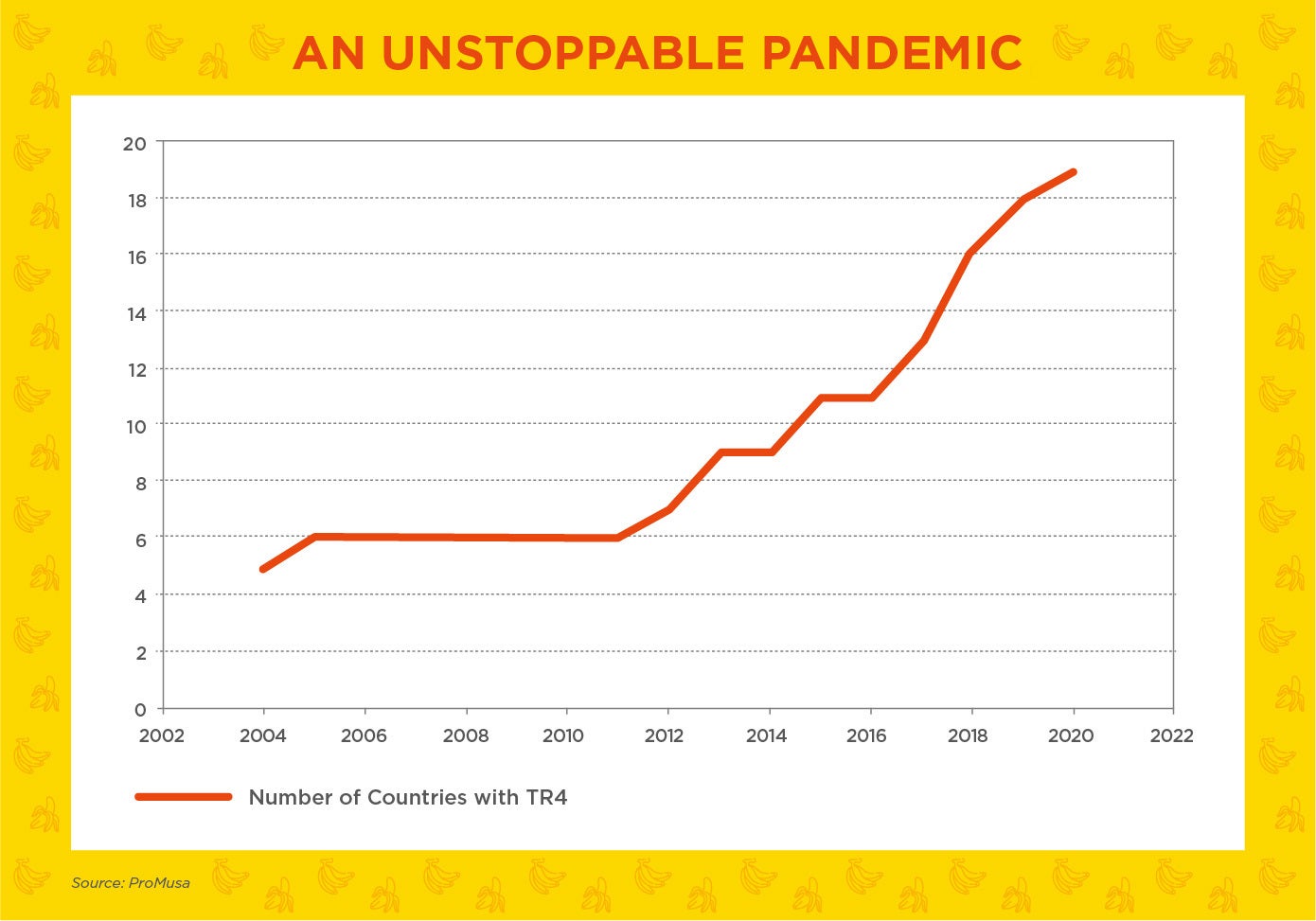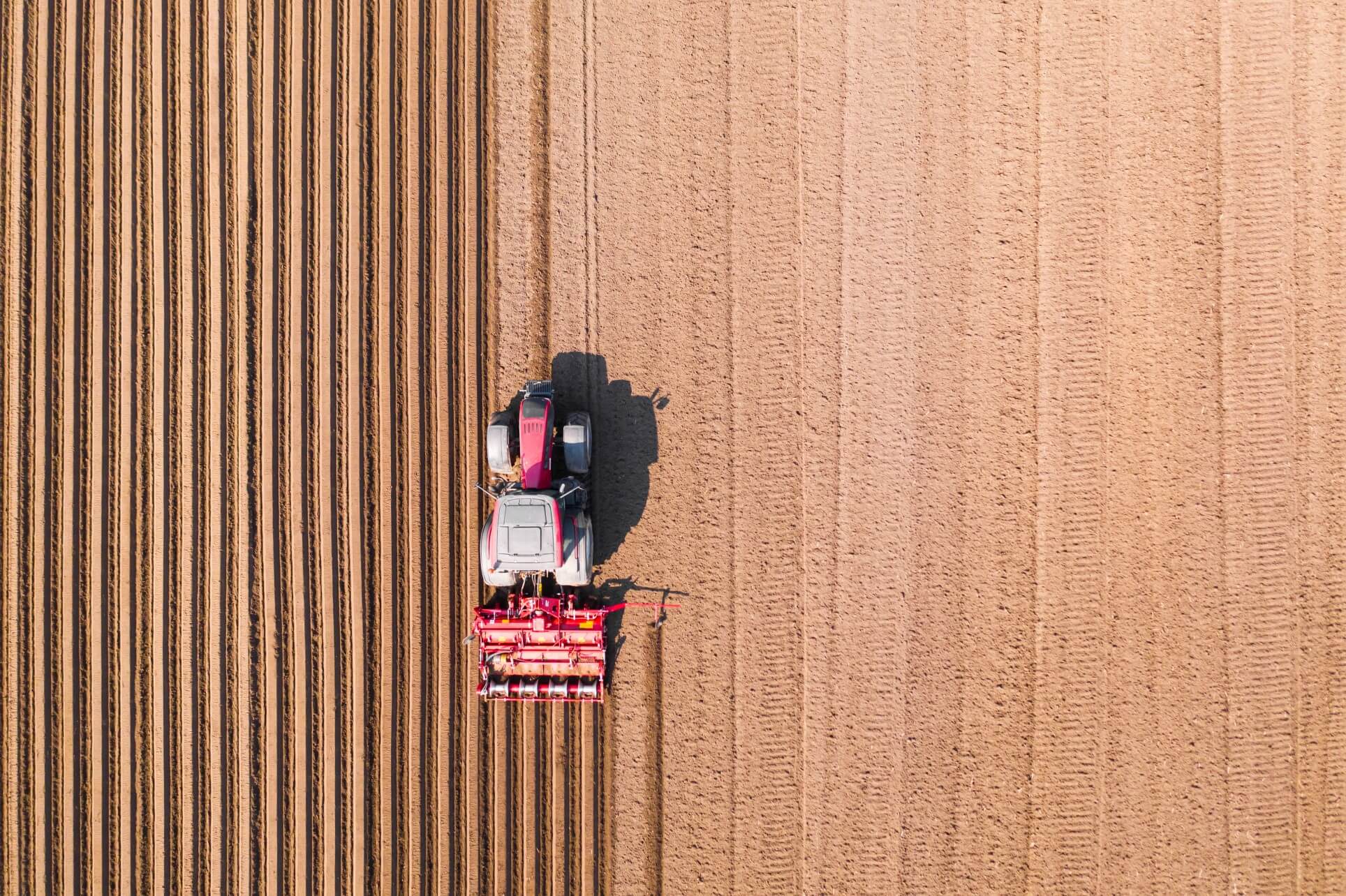Watch Out for TR4, the Banana Disease that is a Worst-Case Pandemic Scenario

Tropical race 4 (TR4), a disease that has no effect on humans but is deadly for banana plantations, has become a byword for worst-case scenario management in the agribusiness world. It is also one from which many valuable lessons can be extracted.
TR4 is a strain of a banana fungus, a pathogen that causes the so-called Panama Disease – given the name because it was first detected there – by spreading through both cultivars that are not affected by other strains of the same pathogen, and also those that already were. In a sense, it is a perfectly deadly enemy for banana planters, as it's easily contagious and has already jumped from one continent to another over several years.
First documented in Taiwan in the 1990s, TR4 spread throughout southeast Asia and several other countries, such as Lebanon, Jordan, Israel and Oman, within a decade. The damage caused was already evident in the 1990s in newly planted monocultures of Cavendish bananas – the main type of modern commercial banana – across southeast Asia, and the fungus was soon wreaking havoc in southern and western Asia.
The biggest problem with TR4 is its extreme endurance and resistance to fungicides. The pathogen can survive in soil for decades, and has multiple modes of transmission, including planting materials, like infected bananas suckers and infected weeds, soil, and water. In fact, TR4 can be disseminated via vehicles and the footwear that people wear in plantations.
The pathogen also has a long latent period. In the early stages, the infection presents no symptoms, so widespread infestation can occur before TR4 is detected in a cultivar: external symptoms of the disease typically develop only 2 to 9 months after plants are infected. All of these factors make management of the Panama Disease especially challenging.
For years, efforts were made to contain TR4 within Eurasia. However, early infections in Australia and Mozambique meant that Latin America and the Caribbean (LAC) – accounting for roughly 25% of global banana and major tropical fruit output – long was the last big banana-producing region that remained free of the disease. That is, until Colombia had its first case last year.

If this story sounds familiar to all those following the news of 2020, it is because pandemics tend to follow similar paths and stages. And not just animal or human pandemics like COVID-19. Think of the Gros Michel banana, the dominant commercial banana type since the late 19th century until it was devastated by the first strain of Panama Disease in the mid-20th century, and replaced by the current Cavendish cultivars – which turned out not to be resistant to TR4.
Although the search for a fungicide that kills TR4 continues, the reality is that the focus in the fight against the disease has shifted to preservation, to stop it from spreading, and management of the plantations already affected. IDB Invest is working with the banana industry to implement protocols and methods to handle the situation in the region, and recently published a detailed booklet with suggested steps to contain TR4.
The key here is that TR4 should not spread from Colombia to other countries in the region. We are talking to multiple banana producers to help them and urging governments and industry bodies to divulge updated knowledge about the disease. Every day counts, so access to plantations must be monitored and restricted, and plantation boundaries must be maintained with deep moats and vegetative barriers that discourage trespass.
In the end, the fact remains that one must be ready for worst-case scenarios and not simply pray for cures and hope for the best. It's likely that a cure will never be found to protect Cavendish bananas from TR4 – in the end, just like the Gros Michel banana disappeared from shelves, the Cavendish type may have to be replaced by other varieties currently being developed in labs around the world. Let us take this lesson to heart.
LIKE WHAT YOU JUST READ?
Subscribe to our mailing list to stay informed on the latest IDB Invest news, blog posts, upcoming events, and to learn more about specific areas of interest.
Subscribe



